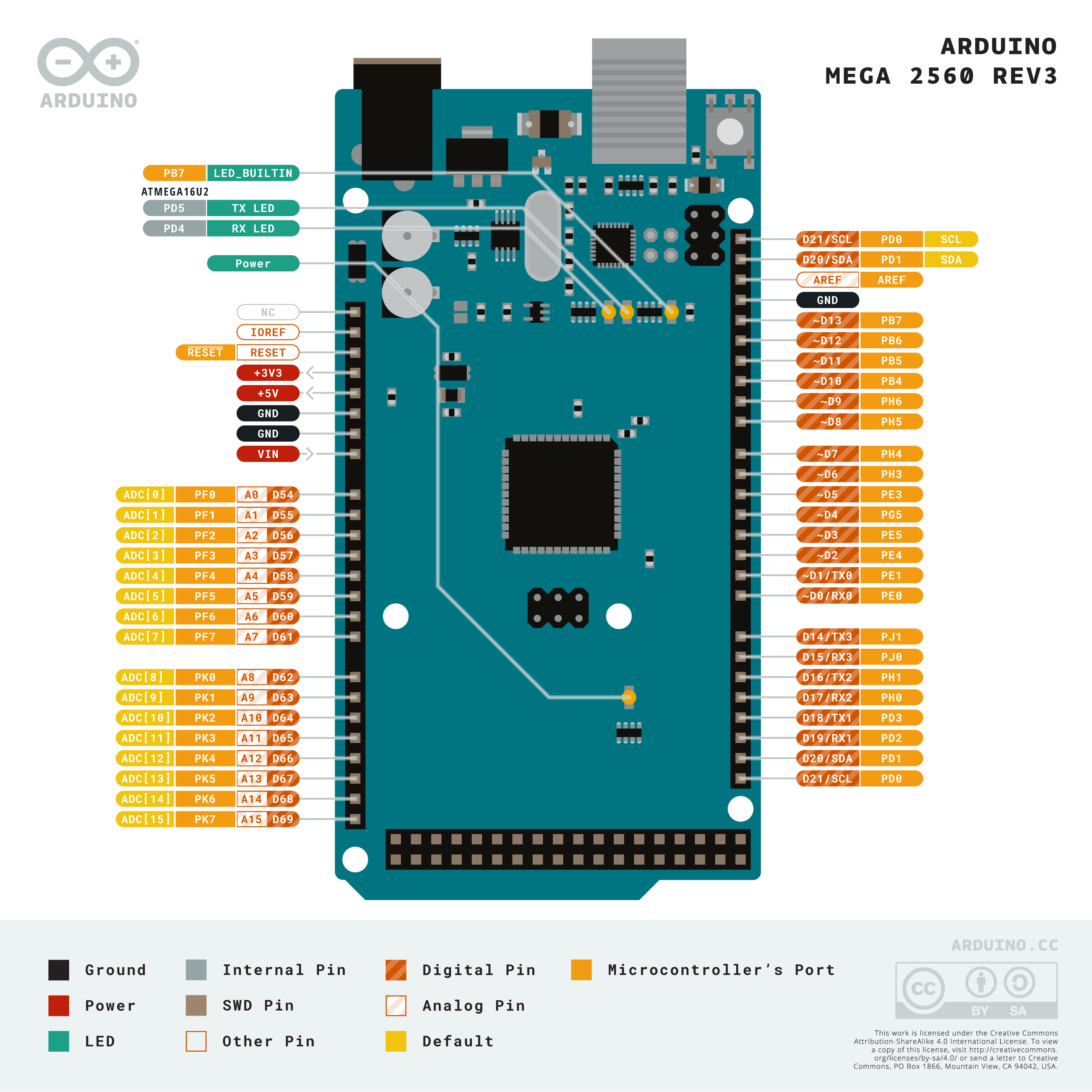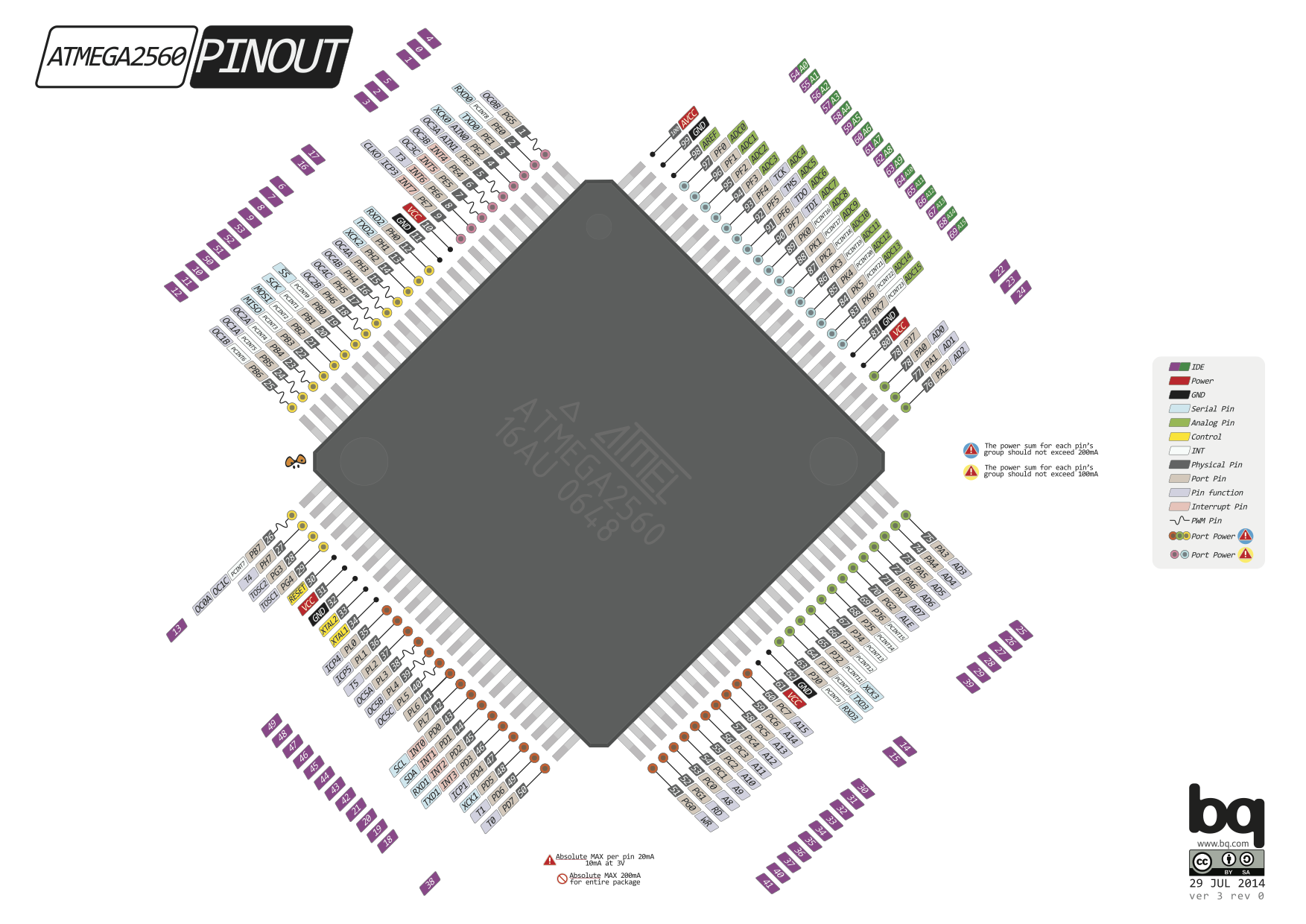

Here is sample code to run on the mega once you have the ESP programmed to type things to the ESP and have it spit back responses. You can also wire a chip to expand the ports if you needed to.

An ESP-01 has one analog input but you would be using the pins on the mega. This board looks like it has a level shifter on it, so it converts the GPIO pin voltages from 5 to 3.3 and back. In this configuration, I can program the Mega as much as I want and run my sketches. The picture below with a regular mega and an ESP-01 is an exact equivalent of what the Mega WiFi can do where I connect the mega to my laptop and the Mega talks to the ESP through Serial3. For my needs, I wanted to have the "special mode" with 1, 2, 3 and 4 on which connects the USB to the Mega as it would normally be and with the toggle switch to Tx3/Rx3, connects the ESP to hardware Serial3 on the Mega.
#Arduino mega 2560 pin out serial
So fiddling with the switches lets you program one or the other or run connected to the USB for using the serial monitor.

The UART for your serial port (hardware Serial) can connect to the mega or the ESP. If you switch them all off, they are disconnected completely from each other and you can use the male pins near the switches to connect to the ESP8266. It is two separate circuits linked with those 8 dip switches. The processors are the same, 16MHz, and one great advantage of these models is the high amount of IOs. So, feeding the Arduino is already feeding the ESP, which is already down to 3v3, and internally that microcontroller is already 3v3. The power in the RobotDyn is 7 to 12 volts, and the ESP8266 is already powered, and already has a voltage reducer. This is wonderful, since the traditional Mega Arduino has only 256kb of memory. We can see, then, that the intention of the RobotDyn creaters was to maintain the architecture of the ATmega.Īs we see in the table above, the ATmega has 32MB of memory, not counting the ESP memory. I particularly like the more compact option, but the power is the same in both. However, in the RobotDyn, we have the mini-USB. We can see that they are similar, but in the 2560, we have the USB printer, which is a large connector. On the picture, you can see the real size of this board, compare with the size of Mega Rev3.Here, we have a comparison between the Mega Arduino with the integrated ESP (Arduino Mega RobotDyn) and the traditional Mega Arduino (Arduino Mega 2560). That will provide a reliable power most of your initial projects. Output current for 5V version - about 800mA, for 3.3V version - about 800mA (Please note that the higher the input voltage the lower the outgoing current). You can supply power to board through the power pin-headers or USB interface. For connecting to PC, pls use the Micro USB cable. The board has a USB interface, based on USB-serial converter CH340G. It is built on MINI board, but the same stable, and uses the original chips ATmega2560 (16MHz).
#Arduino mega 2560 pin out pro
Mega 2560 PRO MINI as functionality similar to the Arduino Mega 2560. Specification of EXTRA Big TFT LCD 480x320 Color Display for Arduino Mega 2560: Screen size 3.5' - 480 X 320 Pixels Support Arduino Mega2560 directly Control IC: ILI9846 Compatible with 3. You can find all pinouts on board: digital's I/O - 70 and analog's input - 16. It is a good solution, to make your final project on solder prototyping board. Mega 2560 PRO MINI it is version PRO of Arduino Mega 2560 R3. Built on the Atmel ATmega2560 microcontroller.


 0 kommentar(er)
0 kommentar(er)
